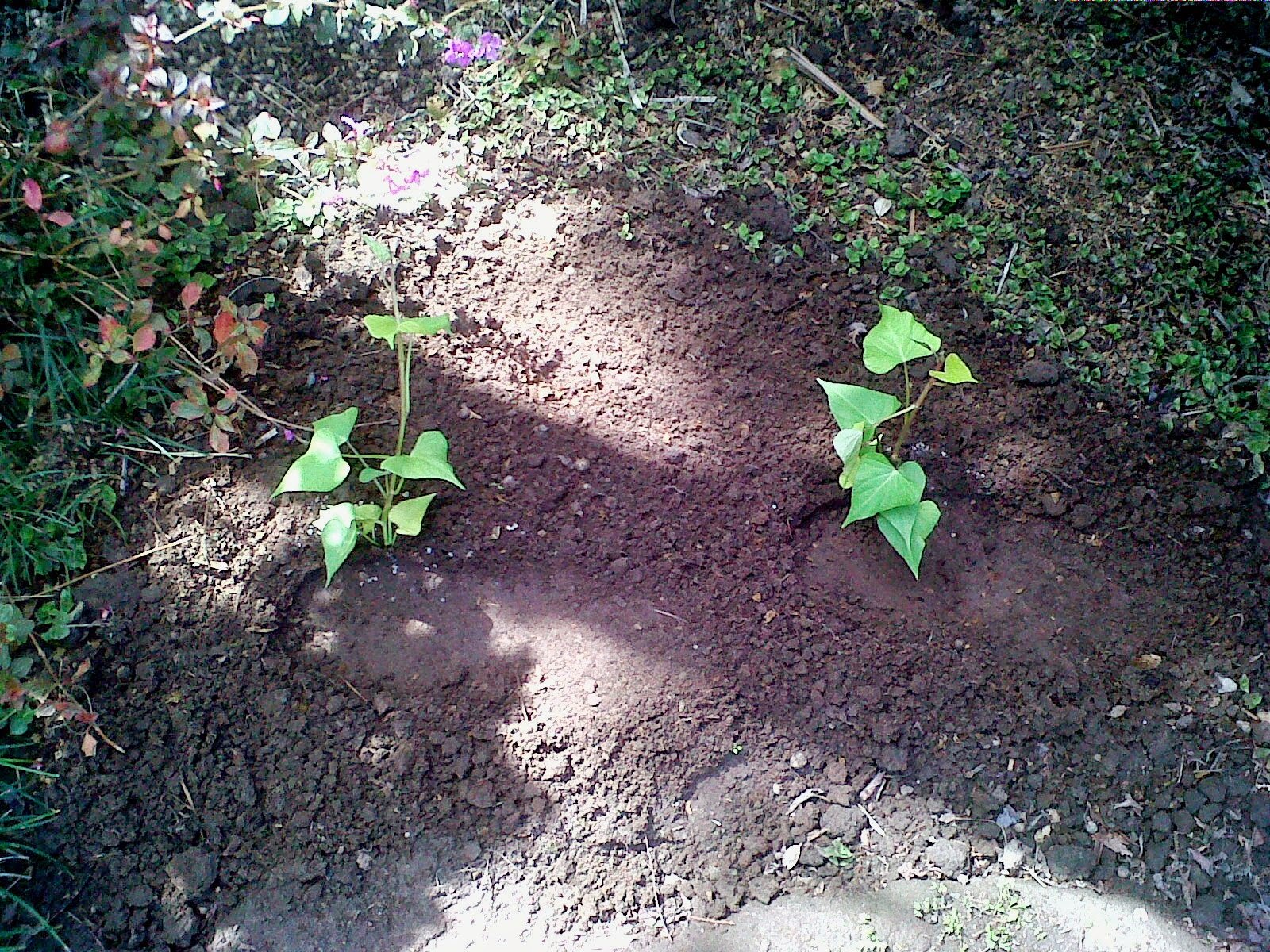Another awesome April surprise was my sweet potato harvest. And boy, what a harvest it was! See, the whole "experiment" started last year mid-winter when my second mom gave me three medium-sized sweet potatoes to start slips with. Yes, I did my research! Unlike the normal potato, which is planted with a seed potato ('moer' in Afrikaans), the sweet potato is planted with slips - or basically stems that grow from a sweet potato lying in water. This is because potatoes are plants that form edible tubers whereas the actual sweet potato is a thickening of its plant's roots, or that is how I understand it.
By the beginning of October my slips were ready to plant. You know this is the case when the slips are six inches long or more. Most will have roots on them as well. Simply break the slips off where they're attached to the potato and its ready to be planted. This is how my slips looked on 8 October 2013:
 |
| Slips started off from 3 sweet potatoes/Ranke wat met 3 patats begin is |
 |
| Small cleared space for sweet potatoes between the grass, ground cover and conifers |
 |
| Sweet potato bed, instead of fruit bed?/Appel, laventel en kumquat skaars sigbaar tussen patatranke |
 |
| The fruit bed, sans sweet potatoes/Vrugtebedding na die patat-oes |
 |
| Sweet potato harvest from the fruit bed/Patat-oes uit die vrugtebedding |
How did the two slips planted six months before fare stuck between grass, ferns and conifers? Well:
 |
| Just as the sweet potato harvest was about to start/Nét voor die patats geoes is |
 |
| Sweet potato harvest from conifer bed/Patat-oes uit conifer bedding |
